
OPAL: October Birthstone
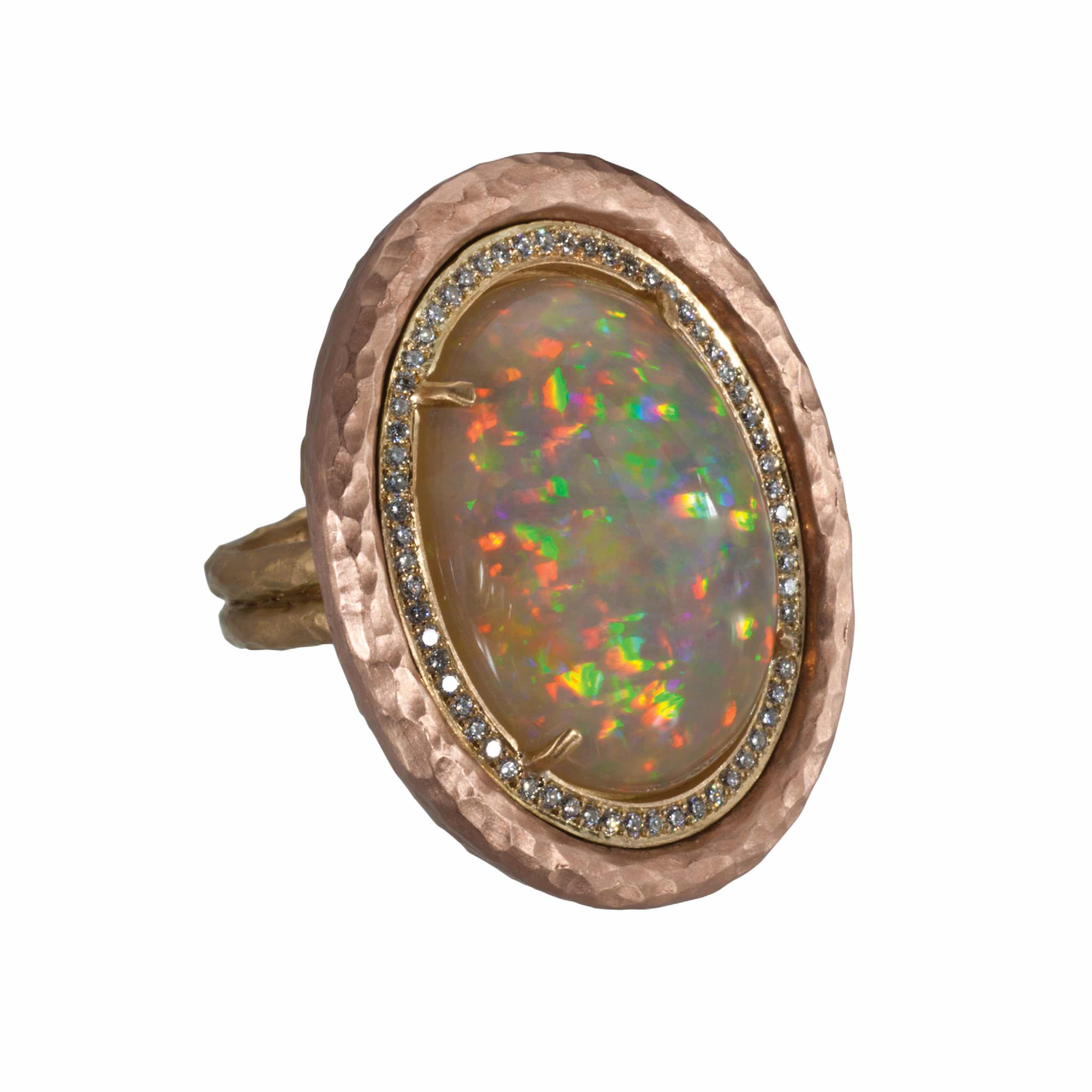
HISTORY
Revered as a symbol of hope, fidelity, and purity, the ancient Romans revered opal because it encompasses the colors of all other gems. Today, opal is still prized for its unique play-of-color, the ability to diffract light into flashes of rainbow color.
Opal occurs in different colors, ranging from semi-transparent to opaque. Along with tourmaline, opal is the birthstone for October and the suggested gift for the fourteenth anniversary.
Opal’s value is based foremost on of play-of-color. The finest opals possess broad patterns over the stone’s entire surface, in which all the colors of the spectrum are represented. While white opal is the most common variety, black opal is the most prized for its dark blue, gray, or black body color.

ORIGINS
Today’s opal comes primarily from Australia, Mexico and the United States. Most opals are not faceted but cut into rounded or free-form cabochons that evoke their natural play-of-color.
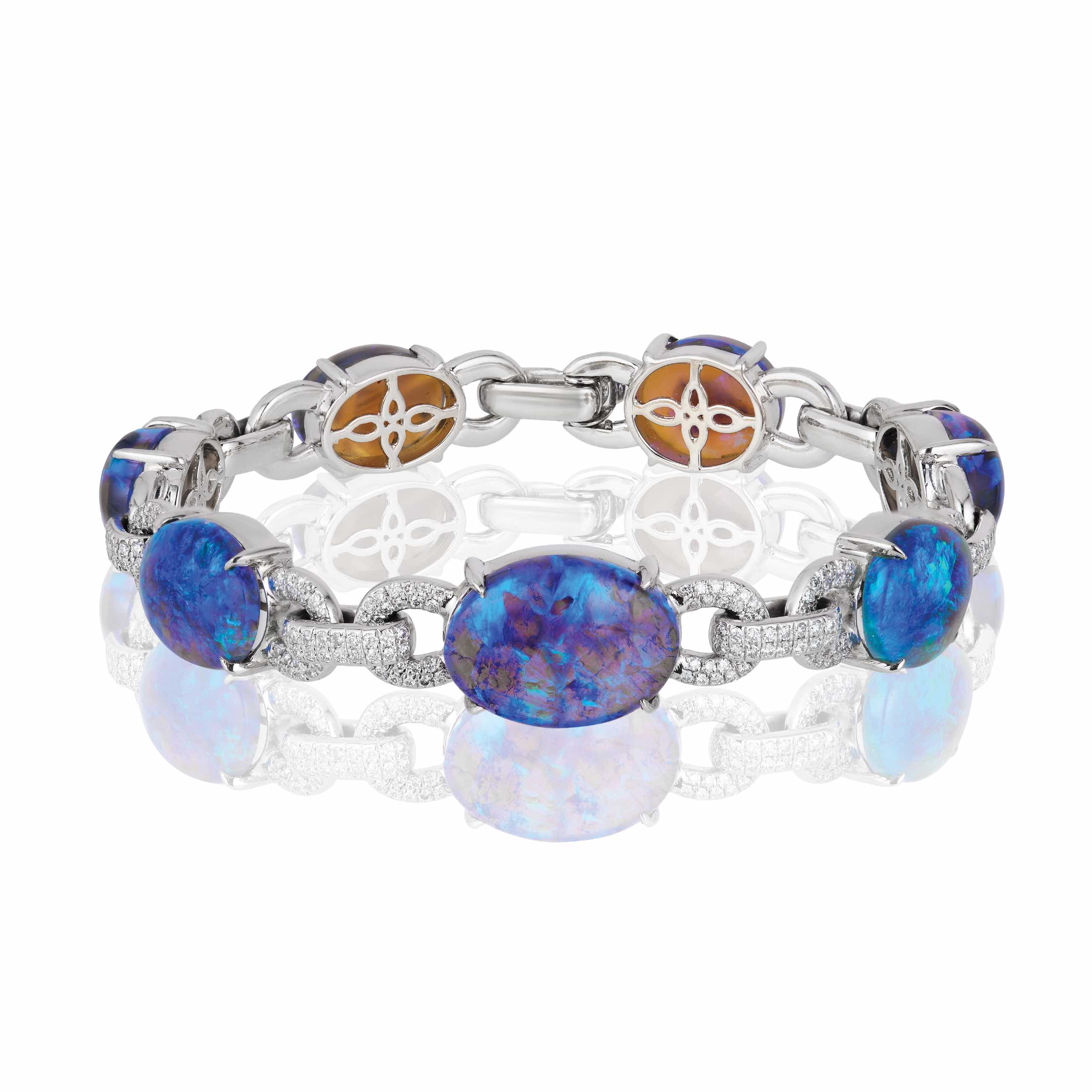
SELECTING A STONE
Although opal is rarely enhanced by methods other than cutting and polishing, they may be treated to enhance their play-of-color. One technique is to immerse white, gray, or black opal in a sugar solution and then in strong sulfuric acid, which ultimately blackens the body color and intensifies its flashes of color.
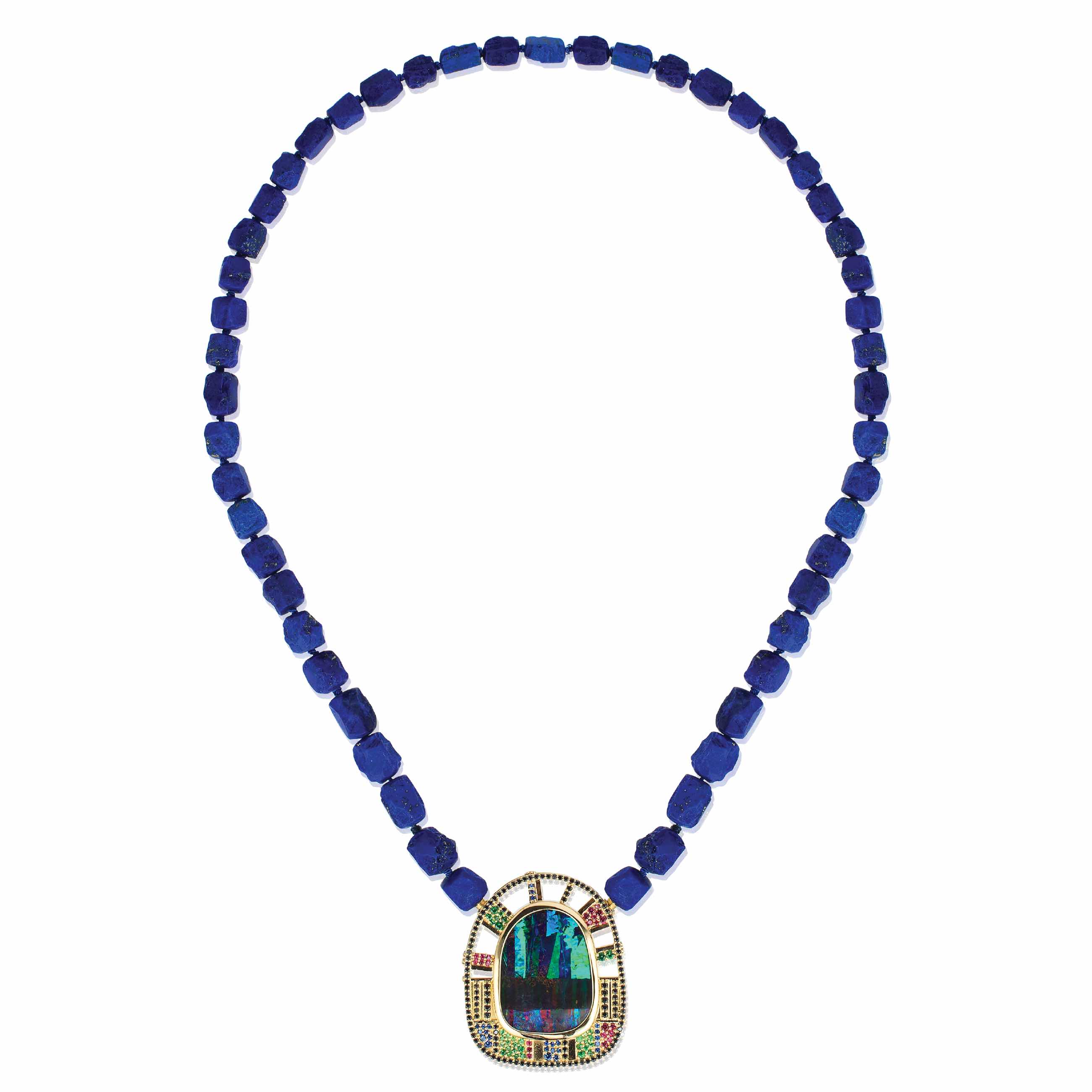
Opals can also be permeated with colorless oil, wax, resin, plastic, and hardeners to improve their appearance and durability. Occasionally, some thinner or translucent opal may be painted with a black epoxy on the backside of the gemstone to darken the gem and improve its play-of-color.
CARE
Opal, with or without enhancement, should be treated with care. Far softer than many other gemstones, it should be stored carefully to avoid being scratched by other jewelry.
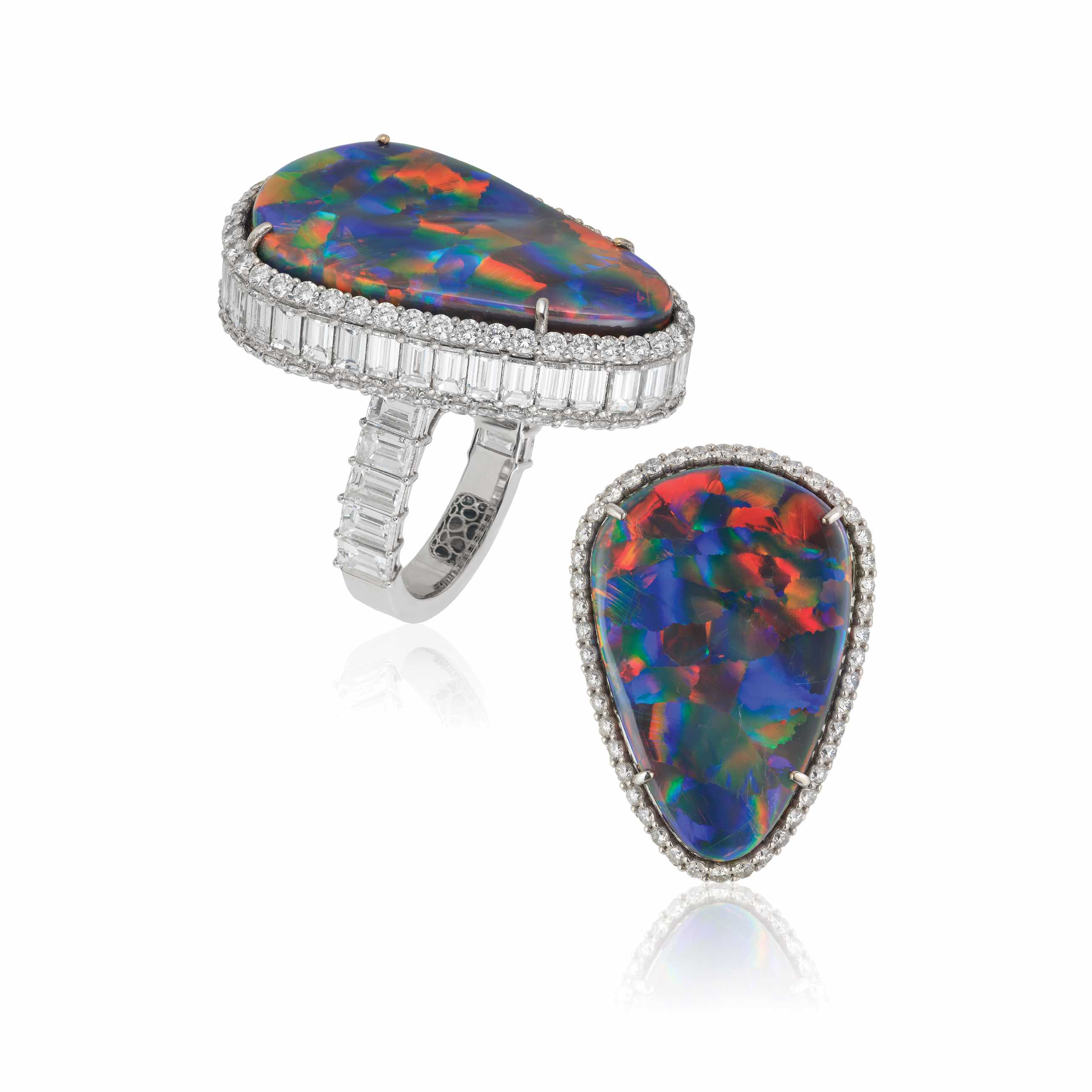
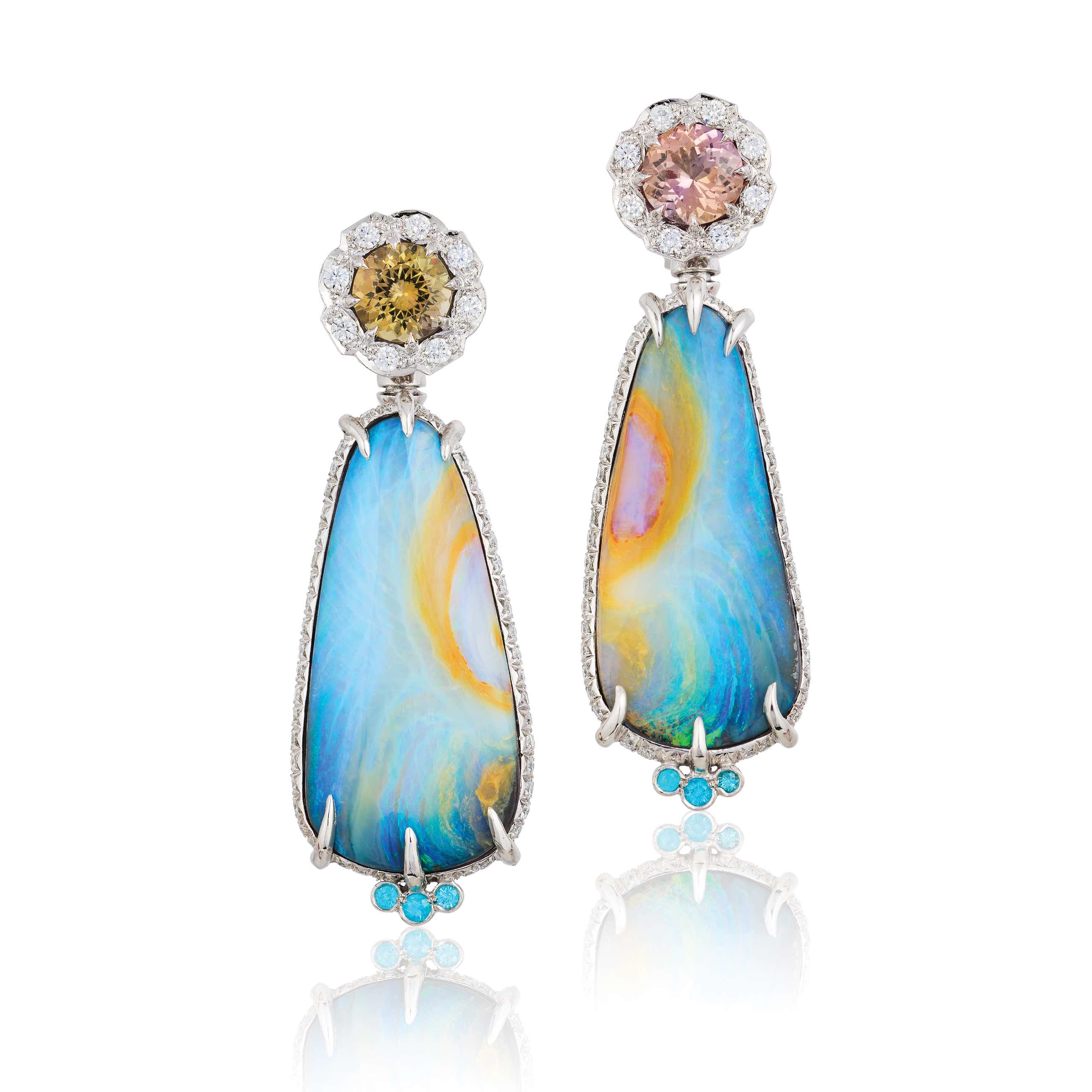
Opal should also be protected from blows, as exposed corners can chip. Opal should not be exposed to heat or acid. To clean, wipe opal jewelry with a soft cloth.


